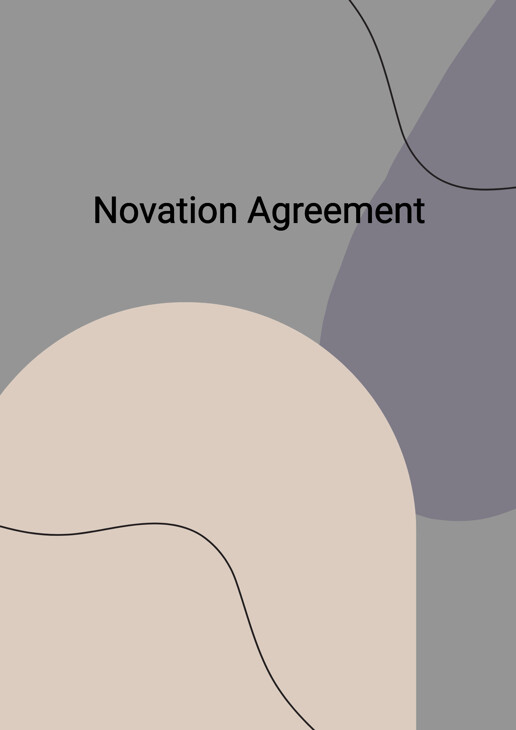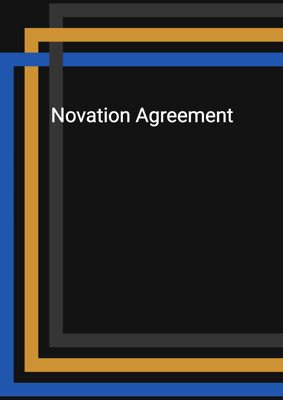
Novation Agreement
Partial Transfer and Release
A simple novation agreement to novate the rights and obligations of the transferor to the transferee with the consent of the counterparty. A partial transfer of all the transferor's rights and release the transferor's obligations under the Agreement to that extent. The transferor otherwise continues as a party to the Agreement.
How to Tailor the Document for Your Need?
01
Create Document
Fill in the details of the parties. You can click the "Fill with Member’s Information" button to complete it with information saved to your account.
02
Fill Information
Please fill in any additional information by following the step-by-step guide on the left hand side of the preview document and click the "Next" button.
03
Get Document
When you are done, click the "Get Document" button and you can download the document in Word or PDF format.
04
Review Document
Please get all parties to review the document carefully and make any final modifications to ensure that the details are correct before signing the document.
Document Preview
Document Description
The Novation Agreement is a legal document that is entered into between three parties: the transferor, the transferee, and the counterparty. The document is important as it facilitates the transfer of an existing agreement from the transferor to the transferee, with the counterparty's consent. The agreement aims to release the transferor from its obligations under the original agreement and replace it with the transferee, who assumes the rights and obligations of the transferor.
The Novation Agreement consists of six sections:
1. Novation: This section outlines the novation process, stating that the transferee becomes a party to the agreement and undertakes to fulfill the transferring obligations in place of the transferor. The counterparty agrees to recognize the transferee's rights and release the transferor from its liabilities.
2. Interpretation: This section provides definitions for key terms used in the agreement, such as excluded obligations, excluded rights, transferring obligations, and transferring rights.
3. Further Assurance: This section emphasizes that all parties are obligated to perform any necessary acts or execute additional documents to implement and give effect to the Novation Agreement.
4. Counterparts: This section states that the agreement can be executed in multiple counterparts, with each counterpart considered an original document.
5. Indemnities (optional): If applicable, this section outlines the indemnification obligations between the transferor and transferee for any claims, liabilities, losses, and expenses arising from their respective acts or omissions.
6. No Third Parties Rights: This section clarifies that individuals who are not parties to the Novation Agreement or the original agreement have no rights to enforce the terms of the agreement.
The Novation Agreement is governed by the jurisdiction state law, and it is signed by the authorized representatives of the parties involved.
How to use this document?
To effectively use the Novation Agreement, follow these steps:
1. Understand the Agreement: Familiarize yourself with the existing agreement between the transferor and the counterparty. Identify the rights and obligations that need to be transferred to the transferee.
2. Gather Information: Collect the necessary information about all parties involved, including their full names, principal places of business, and addresses.
3. Draft the Novation Agreement: Use the provided template and fill in the required details, such as the names and addresses of the transferor, transferee, and counterparty. Specify the novation date, which marks the effective date of the transfer.
4. Novation Process: Clearly state in the agreement that the transferee will assume all the transferring obligations of the transferor and that the counterparty agrees to recognize the transferee's rights. If applicable, include provisions for the release and discharge of liabilities between the transferor and counterparty.
5. Interpretation: Define key terms used in the agreement, such as excluded obligations, excluded rights, transferring obligations, and transferring rights. Ensure that these definitions accurately reflect the intentions of the parties.
6. Further Assurance: Include a clause that obligates all parties to perform any additional acts or execute further documents as required by law to implement and give effect to the Novation Agreement.
7. Counterparts: Specify that the agreement can be executed in multiple counterparts, allowing each party to sign separate copies of the agreement.
8. Indemnities (optional): If desired, include provisions for indemnification between the transferor and transferee for any claims, liabilities, losses, and expenses arising from their acts or omissions.
9. Review and Sign: Carefully review the drafted Novation Agreement to ensure accuracy and completeness. Once satisfied, have the authorized representatives of all parties sign the agreement.
10. Legal Advice: It is advisable to seek legal advice before executing the Novation Agreement to ensure compliance with jurisdiction state law and to address any specific concerns or requirements.
By following these steps, you can effectively use the Novation Agreement to transfer rights and obligations between parties while ensuring legal compliance and protection of interests.
Not the right document?
Don’t worry, we have thousands of documents for you to choose from:







